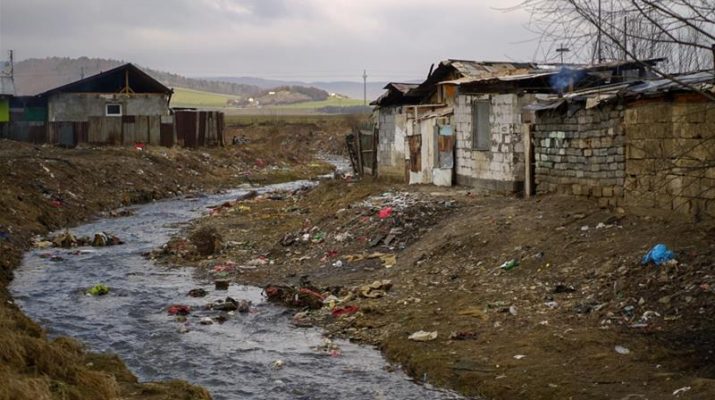Slipshod huts and sagging shacks line both sides of the quiet river that bisects the densely populated Roma slum in the centre of Jarovnice, an impoverished village in the Sabinov district of eastern Slovakia.
On a cold morning in March, speeding cars bounce along muddy paths, drivers navigating one pothole after another and dodging children who have nowhere to play but the streets.
A rickety steel bridge connects the two sides of the slum and serves as a meeting place for children returning from school.
Martin Kaleja Januv, a 33-year-old teaching assistant, is one of the few residents of Jarovnice with a paying job. The Roma population’s 97 percent unemployment rate renders most locals entirely dependent on welfare, according to the local municipality’s estimates.
Of the village’s estimated 6,548 residents, more than 5,600 are Roma who live in the slum, which covers less than a square kilometre.
“The worst part is the lack of privacy,” says Martin, who lives with his wife, father-in-law and three children in a two-room home on a tiny, grassless lot shared with other homes and shacks. “If I could afford it, I’d live somewhere else. Not just for me, but for my kids.”
His family is among the few lucky ones. Built without permits, many homes house between eight and 10 people and lack electricity, water and gas.
“We are trying to save some money to buy something outside the settlement,” he says, explaining that he makes around 300 euros (about $327) a month. “But every time we save up a little money, something unexpected happens and we spend it.”
Growing up in Jarovnice, he says his childhood was punctuated with racist insults and systemic discrimination. “When I used to travel to school on the bus, they [white Slovaks] would call us smelly. When we go to the store, they watch us like we’re going to steal,” he says, shaking his head.
Numbering half a million and making up an estimated 10 percent of Slovakia’s population, Roma are the second-largest ethnic minority in the country.
According to a November 2014 policy paper by the Institute for Financial Policy, nearly 40 percent of the adult Roma population existed entirely outside the labour market, as compared with 24 percent of non-Roma. Those who can work often do so in the black market. Citing widespread discrimination and low education levels, the paper found that the employment rate of Roma aged 15 to 64 sat at 17 percent.
In Jarovnice, Martin says, life “just keeps getting worse and worse. It’s overcrowded, and people really don’t have a chance to develop themselves here”.
“There is no escape. We can’t get jobs … [that pay] enough money to buy something or move somewhere else,” he adds. “Everyone says Roma cannot adapt themselves to the country’s way of life and abuse the social system and take money. But this money is so little that you can’t live from it. Even my salary is small.”

